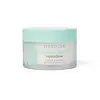What's inside
What's inside
 Key Ingredients
Key Ingredients

 Benefits
Benefits

 Concerns
Concerns

 Ingredients Side-by-side
Ingredients Side-by-side

Water
Skin ConditioningLavandula Angustifolia Flower Water
Skin ConditioningC13-15 Alkane
SolventGlycerin
HumectantNiacinamide
SmoothingCaprylic/Capric Triglyceride
MaskingCetearyl Alcohol
EmollientCoco-Caprylate/Caprate
EmollientOctyldodecanol
EmollientZinc PCA
HumectantPolyacrylate Crosspolymer-6
Emulsion StabilisingSodium Acrylates Copolymer
Phenoxyethanol
PreservativeDiheptyl Succinate
EmollientGlyceryl Stearate Citrate
EmollientLactobacillus Ferment Lysate
Skin Conditioning1,2-Hexanediol
Skin ConditioningCapryloyl Glycerin/Sebacic Acid Copolymer
Skin ConditioningLecithin
EmollientPanthenol
Skin ConditioningTetrasodium Glutamate Diacetate
Ceramide NP
Skin ConditioningEthylhexylglycerin
Skin ConditioningSodium Hydroxide
BufferingAloe Barbadensis Leaf Juice
Skin ConditioningSodium Hyaluronate
HumectantWater, Lavandula Angustifolia Flower Water, C13-15 Alkane, Glycerin, Niacinamide, Caprylic/Capric Triglyceride, Cetearyl Alcohol, Coco-Caprylate/Caprate, Octyldodecanol, Zinc PCA, Polyacrylate Crosspolymer-6, Sodium Acrylates Copolymer, Phenoxyethanol, Diheptyl Succinate, Glyceryl Stearate Citrate, Lactobacillus Ferment Lysate, 1,2-Hexanediol, Capryloyl Glycerin/Sebacic Acid Copolymer, Lecithin, Panthenol, Tetrasodium Glutamate Diacetate, Ceramide NP, Ethylhexylglycerin, Sodium Hydroxide, Aloe Barbadensis Leaf Juice, Sodium Hyaluronate
Water
Skin ConditioningCoco-Caprylate/Caprate
EmollientEthyl Macadamiate
Skin ConditioningGlycerin
HumectantC10-18 Triglycerides
EmollientPropanediol
SolventPolyglyceryl-6 Distearate
EmulsifyingBisabolol
MaskingAllantoin
Skin ConditioningGlycereth-26
HumectantCopernicia Cerifera Wax Extract
Simmondsia Chinensis Seed Oil
EmollientRice Bran Oil Polyglyceryl-3 Esters
EmulsifyingSclerotium Gum
Emulsion StabilisingIsosorbide Dicaprylate
Skin ConditioningZinc Hydrolyzed Hyaluronate
HumectantLinoleic Acid
CleansingLinolenic Acid
CleansingSqualene
EmollientMorinda Citrifolia Callus Culture Lysate
Skin ConditioningPotassium Cetyl Phosphate
EmulsifyingHelianthus Annuus Seed Oil
EmollientTocopherol
AntioxidantCitric Acid
BufferingBeta-Sitosterol
Emulsion StabilisingPhosphoric Acid
BufferingMalic Acid
BufferingEthylhexylglycerin
Skin ConditioningPhenoxyethanol
PreservativeWater, Coco-Caprylate/Caprate, Ethyl Macadamiate, Glycerin, C10-18 Triglycerides, Propanediol, Polyglyceryl-6 Distearate, Bisabolol, Allantoin, Glycereth-26, Copernicia Cerifera Wax Extract, Simmondsia Chinensis Seed Oil, Rice Bran Oil Polyglyceryl-3 Esters, Sclerotium Gum, Isosorbide Dicaprylate, Zinc Hydrolyzed Hyaluronate, Linoleic Acid, Linolenic Acid, Squalene, Morinda Citrifolia Callus Culture Lysate, Potassium Cetyl Phosphate, Helianthus Annuus Seed Oil, Tocopherol, Citric Acid, Beta-Sitosterol, Phosphoric Acid, Malic Acid, Ethylhexylglycerin, Phenoxyethanol
 Reviews
Reviews

Ingredients Explained
These ingredients are found in both products.
Ingredients higher up in an ingredient list are typically present in a larger amount.
Coco-Caprylate/Caprate is created from fatty coconut alcohol, caprylic acid, and capric acid.
It is a lightweight emollient. Emollients create a thin barrier on the skin to trap moisture in. This helps keep your skin hydrated and soft.
Once applied, Coco-Caprylate/Caprate is absorbed quickly and leaves a silky feel.
Coco-Caprylate/Caprate may not be fungal acne safe.
Learn more about Coco-Caprylate/CaprateEthylhexylglycerin (we can't pronounce this either) is commonly used as a preservative and skin softener. It is derived from glyceryl.
You might see Ethylhexylglycerin often paired with other preservatives such as phenoxyethanol. Ethylhexylglycerin has been found to increase the effectiveness of these other preservatives.
Glycerin is already naturally found in your skin. It helps moisturize and protect your skin.
A study from 2016 found glycerin to be more effective as a humectant than AHAs and hyaluronic acid.
As a humectant, it helps the skin stay hydrated by pulling moisture to your skin. The low molecular weight of glycerin allows it to pull moisture into the deeper layers of your skin.
Hydrated skin improves your skin barrier; Your skin barrier helps protect against irritants and bacteria.
Glycerin has also been found to have antimicrobial and antiviral properties. Due to these properties, glycerin is often used in wound and burn treatments.
In cosmetics, glycerin is usually derived from plants such as soybean or palm. However, it can also be sourced from animals, such as tallow or animal fat.
This ingredient is organic, colorless, odorless, and non-toxic.
Glycerin is the name for this ingredient in American English. British English uses Glycerol/Glycerine.
Learn more about GlycerinPhenoxyethanol is a preservative that has germicide, antimicrobial, and aromatic properties. Studies show that phenoxyethanol can prevent microbial growth. By itself, it has a scent that is similar to that of a rose.
It's often used in formulations along with Caprylyl Glycol to preserve the shelf life of products.
Water. It's the most common cosmetic ingredient of all. You'll usually see it at the top of ingredient lists, meaning that it makes up the largest part of the product.
So why is it so popular? Water most often acts as a solvent - this means that it helps dissolve other ingredients into the formulation.
You'll also recognize water as that liquid we all need to stay alive. If you see this, drink a glass of water. Stay hydrated!
Learn more about Water